Tekonsha Prodigy P3 Trailer Brake Controller w/ Custom Harness - Up to 4 Axles - Proportional
with factory 4-Flat
with factory 7-Way
Will this fit?
To see if this custom-fit item will work for you please tell us what vehicle you'll use it with.
- All Info
- Reviews (6614)
- Q & A (0)
- Videos (11)
- Photos
Tekonsha Trailer Brake Controller
- Electric
- Electric over Hydraulic
- Proportional Controller
- Up to 4 Axles
- Tekonsha
- Under-Dash
- Plug-In
- Under-Dash Box
- Multiple Trailers
- LCD Display
The Tekonsha P3 is a brake controller beloved for its reliability and useability. You're able to save your settings and multiple profiles. It's easy to install, and with the custom harness, it's plug-and-play.
Features:
- Proportional - Smooth, safe, and good for your brakes long-term
- Great for a fleet - Save and customize multiple profiles
- Installs quickly - Mount the bracket to the dash, then attach the unit to the bracket
- Plug-and-play - Custom harness included
- Simple controls - Large, accessible buttons for all your settings
- Easy-to-read display includes diagnostics - Straight-forward messages get you to the root of the problem quickly
- Safe - Built-in safeguards protect vehicle, trailer, and controller
- Quick disconnect - Easy to unplug and remove the controller when you don't need it
- Automatic leveling - Must be parallel with direction of travel and horizontally level
Specs:
- Application: trailers with up to 4 axles (8 brake assemblies)
- Compatible with electric or electric-over-hydraulic trailer brakes
- Overall dimensions: 5" long x 3-1/2" wide x 1-3/8" tall
- LCD display dimensions: 1-3/16" wide x 9/16" tall
- Mounting range: 360 degrees vertically
- Warranty:
- Limited lifetime on brake controller
- Limited 1-year on wiring harness
Braking Output

Braking output is the maximum amount of power that will be applied to your trailer's brakes. How much braking output you need is determined by the weight of your trailer; a heavier trailer will need more power to bring it to a stop. You want to go as high as you can without the trailer brakes locking up.
Use the arrow buttons on the front of the module to set the output.
Power Boost for Heavy-Duty Towing
The boost setting controls the aggressiveness of your trailer's braking, meaning how quickly the brakes reach the maximum braking level. If your vehicle takes too long to come to a stop, increase the setting. If it stops too abruptly, decrease the setting.
Depending on the level of boost, your trailer brakes can start at either 13 percent or 25 percent of the set braking output. So instead of starting at 0, the brakes will start at 25 percent and get to 100 percent sooner. This keeps the trailer from pushing your tow vehicle forward.
Boost Levels:
| Approximate Gross Trailer Weight | Boost Level | Increase in Initial Power Output |
|---|---|---|
| Less than tow vehicle GVW | B1 | 13% |
| Equal to tow vehicle GVW | B1 or B2 | 13% or 25% |
| Up to 25% more than tow vehicle GVW | B2 or B3* | 25% |
| Up to 40% more than tow vehicle GVW | B3* | 25% |
*Both B2 and B3 offer a 25-percent boost in initial power. But the braking curve for B3 is more aggressive than that of B2. This means that, even though you will start out with the same intensity when using these boost levels, you will get an overall more aggressive braking experience with the higher level. So if you use B3, you will reach maximum braking sooner than if you use B2.
Manual Override
To engage the manual override, twist the rotary-style lever from right to left. This will activate the trailer's brakes and brake lights independently of your vehicle, great for stopping sway or controlling your trailer's momentum in an emergency.
Save Your Settings in Multiple Profiles
The P3 is able to store your settings in multiple profiles so that you can have them ready to go for different trailers and drivers. Even the display is super customizable: you can change the screen color, brightness, and language to make it easy to use.
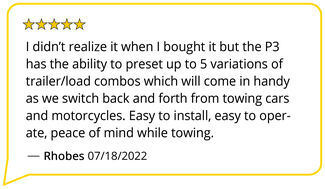
Troubleshoot with Detailed Diagnostics
The P3 makes it easy to troubleshoot problems as they come up, with comprehensible and detailed diagnostics displayed on the screen.
















Diagnostic troubleshooting messages include:
- Battery voltage
- Voltage supplied by stop light switch when brake pedal is depressed
- Output voltage to trailer brakes
- Output current to trailer brakes
Diagnostic warning signs include:
- Open ground
- Overload
- Output short
- Power loss
- No trailer connection
Safety Features
The Prodigy P3 offers advanced safety features to prevent damage to various components of your towing setup.
-Integrated reverse battery protection shields the brake controller and your trailer's breakaway system from shorts.
-When the P3 is not in use, it draws only 3.6 milliamps, minimizing drain on your vehicle's battery.
-Any time your vehicle and trailer are at a standstill with the brakes applied for more than 5 seconds, the hold feature will kick on and reduce power to just 25 percent. This will keep your trailer in place without your brakes overheating.
Installing the Tekonsha P3
Installing the P3 is incredibly simple. You'll mount the bracket to your dashboard then mount the unit to the bracket. Plug the custom harness into your vehicle and into the unit. Done!
Keep in mind that the P3 must be horizontally level and parallel with the direction of travel to work correctly.


With a replacement wiring harness (sold separately) and replacement bracket (TK5906 - sold separately), you can even transfer the Prodigy P3 to another vehicle.


Note: If you don't already have a 7-way plug at the back of your vehicle, take a look at our exclusive 7- and 4-way brake controller installation kit (ETBC7 - sold separately).
What is Proportional Braking?
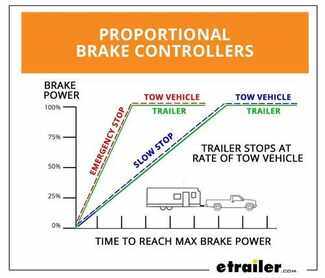
Proportional braking means that your trailer brakes mimic your tow vehicle's brakes. If you slam on the brakes, your trailer brakes will activate with the same intensity; if you brake lightly, your trailer brakes lightly too. The trailer's braking is in proportion to your vehicle and trailer.
The Prodigy P3 uses an internal inertia sensor to detect how your vehicle is braking so it can send the right amount of braking power to your trailer. It measures the inertia of your tow vehicle and activates the trailer's brakes to slow at the same rate. The result is uniform braking across your towing setup. No push-pull action - just smooth, proportional braking every time.
90195 Tekonsha Prodigy P-3 Proportional Trailer Brake Control
Replaces 39526 Hidden Hitch and 20195 Draw-Tite Intella-Stop Xtreme Proportional Brake Control
302100 Tekonsha Brake Control Wiring Adapter with 2 Plugs
Replaces Tekonsha 3021-P
Installation Details
California residents: click here

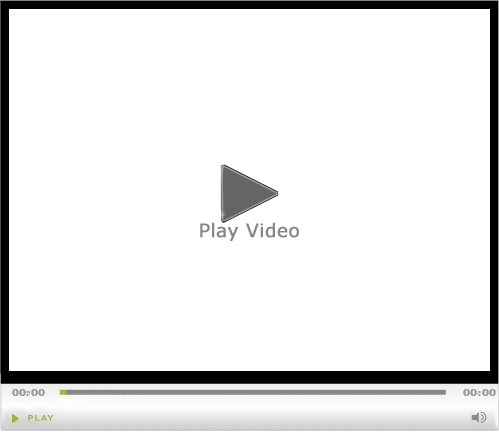
Videos are provided as a guide only. Refer to manufacturer installation instructions and specs for complete information.
Video Transcript for How to Install the Tekonsha Prodigy P3 Trailer Brake Controller on a 2006 Dodge Ram Pickup
Hi there Ram owners. Today in your 2006 Ram 1500, we're going to be taking a look at and showing you how to install Tekonsha's Prodigy P3 Trailer Brake Controller.Our customer has recently been hauling his Winnebago here, and you can see this big old trailer, and this is what he's been using to haul it here, this old impulse brake controller. He's been having a lot of issues with the brakes applying too hard, they're just abrupt, this is an old time-delay model. He just doesn't like the way it feels. He gets a lot of issues with the way it porpoises from applying a little bit too hard, especially just going around parking lots and things like that, it's even more noticeable.So we're going to get this old nasty wiring he's got and get this guy out of here, and get him something a little more modern that's going to smooth out his towing experience.Tekonsha's Prodigy P3 Brake Controller is a premium brake controller that has pretty much every option that you would want. It works with trailers that have one to four axles and provides you with some extra features that many of the other ones don't.
This is a proportional brake controller, which means the harder you stop, the harder it is going to apply the brakes on your trailer. You can set the output with the buttons here on the left to choose the amount of power going to the brakes, the maximum output.And then on the right here, the little lightning bolt symbol here is for our boost setting, and this is going to tweak the strategy of the inertia sensor inside to make the system a little bit more responsive. And it's mainly used for when you have a heavier trailer, so currently we've got it off, but if we had a trailer that was pretty close to the weight of our truck, still less than our truck or pretty close, we would go into the boost one setting to help make the brakes a little more aggressive for that extra weight. If our trailer was roughly the same weight, we would want to use the boost two. And when your trailer weighs more than your truck, you want to go into the boost three setting to help compensate for that.You can also turn it off, or if you've got just something real light and you don't need it.
The boost button also works for reverse lockout for when you're backing up, if you don't want to activate the brakes then, it makes it easier when parking. Hold the break down, and then hold down the boost button, and then you can see we're in reverse mode as it's flashing there.I'm going to undo the button to take it out of reverse mode, but it will come out of reverse mode by itself after a few minutes. If we hold the boost button down, when not pressing on the brakes, that's going to open up our trailer menu where we can choose between five different trailer settings. And this is really nice if you've got multiple trailers, especially if you've got one maybe that's a smaller trailer that has electric brakes on it, and you've got a really big trailer that you have electric over hydraulic. You'd be able to set the profiles up for these to have the proper amount of power for that particular trailer, as well as the particular type it is.Now we can see here, if we hit the little booklet button, you can adjust your display settings.
And right here at break type is where you can choose whether you have electric or electric over hydraulic brakes, which is really nice that it has that feature. A lot of the other models are really just designed for electric brakes, but this one here is going to handle pretty much any trailer you need to hook it up to.On bottom, you have your manual slide, so you can apply the brakes manually. This is nice for testing out the system, and also if your trailer starts to sway, you can just kind of bump the brakes and that makes your trailer want to slow down, but you still don't because you didn't actually hit the brakes in your vehicle, and it kind of makes you want to separate, but you can't separate, you're connected together, so it puts you in a nice straight line again.Now that we've covered some of the features of our brake controller, why don't you follow along with me and we'll show you how to get it installed.We'll begin our installation underneath the dash by finding our factory connector so we can plug in our harness that's going to go to our brake controller. On the driver's side, underneath the dash, over here by the kick panel, kind of straight behind where your parking brake pedal is, you'll find this blue connector here right next to this computer module. That's where we're going to plug our new harness into.
Just line up the release connector right there with the little slot there, pushing the two together until they click into place. And we've now got our wiring done for us.We can now mount up our brake controller. Our customer wanted his brake controller here in this location, so we're going to put it right down here. We're just going to use the screws that they come included with here to get them mounted up. We're just going to line up the screw where we want to mount it here at the bottom. We're going to put it at about that location there, so we're just going to get set into place and then run our screw right in. Then we're just going to make it so it's even, so it will be facing front to rear, and then we'll run it in the other side here.We're now to mount our bracket. This is the quick release bracket in our kit to the small one right here, and we're going to do that using the two screws. These are the more machine screws, they don't have the point on the end. So just slide this guy in between, line up the holes, and then you can just start it right into the bracket there. And I recommend not tightening it all the way down on one side, I usually like to get it started maybe about halfway and then I'll get the other one started. This will just let you be able to move it around freely without worrying about accidentally damaging one of the ears.We can now take our brake controller, and we're just going to insert it into the bracket. I'll show you the backside real quick here before we slide it in, just because it's harder to see, and you can see here that our connector is just going to go in like that. So I'm going to slide it in place, put the back first, and then kind of just push it up until those click into place, and then we can plug in the backside. It can be a little tricky to see, to grab it, but it's usually easier to put on the bracket first and then the connector.And we can see as soon as we plugged it in, that it lit up, and it is now showing that we are connected, because we are, our trailer is currently hooked up. So if we go ahead and hit our manual slide, I can hear the buzzing of the brakes behind me, so I know it's sending me output. You can also see here that it is sending a voltage, if you we're not connected, it would just tell you on the screen that you weren't connected to a trailer. So this is a good way to just test it out, plug your trailer in, see that you can detect your trailer, and try to hit the manual slide, and if you get a voltage here and you hear the buzzing, you know that it's sending it to your brakes.And that completes our installation of Tekonsha's Prodigy P3 Trailer Brake Controller on our 2006 Ram 1500.
Customer Satisfaction Score:
99% were satisfied with this product
1% of customers were not satisfied
Ratings & Reviews
4.9
3503 reviews
See what our Experts say about this Tekonsha Trailer Brake Controller
- Can I Add Electric Brakes To A 1993 EZ Loader Boat TrailerHello Mike. It sounds like you are wanting to add electric brakes to your boat trailer that currently has no brakes. This is possible, but you will first need to make sure that your axle is equipped with a brake flange at the base of the spindle. The brake flange is necessary for adding brakes. If you do have a brake flange, you will next need to determine your bearing sizes. Electric brakes will require new hubs and drum assemblies, and we need to be sure that there is a drum available...
view full answer... - Hitch, Weight Distribution and Brake Controller Recommendations for a 2017 Toyota Sienna XLEWe can get you everything you need for towing with your 2017 Toyota Sienna XLE. By plastic shield, I believe you are referring to the appearance panel underneath the Sienna, and that will have to trimmed a bit in each of the hitches available for the vehicle. A great Class III hitch would be the Curt # C13105, which is rated for weight distribution and has been given a nearly 5-star review on our site by the over 500 customers that have rated it. As for a brake controller, the wireless...
view full answer... - Will The Curt Echo Manual Override Button C83HR Work Without The App?Hey John, good question. The app must be running in order for the separate manual override button part # C83HR to work. If your phone is not connected to the controller with the app running, the button will not do anything. I know the connectivity issues can be frustrating, but it might not necessarily be something you are doing wrong so much as the controller just being unreliable. This is by far the most common complaint we get about the Curt Echo # C51180 wireless controller. Most...
view full answer... - Difference Between Curt & Draw-Tite Trailer Hitches For 2018 Jeep Wrangler UnlimitedHi Ken, Starting with the wiring harness, I can verify for you the correct fit for the 2018 Jeep Wrangler Unlimited without a tow package is indeed the T-One Vehicle Wiring Harness with 4-Pole Flat Trailer Connector # 118786. Then for the hitches, the biggest difference between the Curt Trailer Hitch Receiver # C13392 and Draw-Tite Trailer Hitch Receiver # DT78MR is the length of the receiver. The Draw-Tite has a shorter receiver that can make it a bit more of a pain to add a ball mount...
view full answer... - Comparing the Universal Installation Kit # ETBC7 and the 7-Way RV Upgrade Kit # ETBC7LThere are a few differences between the Universal Installation Kit part # ETBC7 and the 7-Way RV Upgrade Kit part # ETBC7L. The biggest one is that part # ETBC7 comes with both the power and brake output wire you will need to run to the cab/battery whereas the part # ETBC7L only comes with the power wire you will need to run to the battery. The reason for this is because part # ETBC7L is geared more towards wireless brake controllers like the Curt Echo Mobile Trailer Brake Controller part...
view full answer... - Disc Brake Conversion Kit For 2021 Grand Design Solitude 310GKR With 7,000 lb AxlesHello Rick, thanks for reaching out. The 7,000 lb axle on your 2021 Grand Design Solitude 310GKR uses a standard bearing combination, so finding compatible disc brakes will be easy. Here is what I recommend: - DeeMaxx Disc Brake Kit - 13" Hub/Rotor - 8 on 6-1/2 - Maxx Coating - 9/16" Bolts - 7K # DE68YR - Hydrastar Electric Over Hydraulic Actuator Kit for Disc Brakes - 1,600 psi # HBA16-252-82 The disc brake kits are enough for one axle, so you will need two kits if you want brakes on...
view full answer... - Parts Needed to Add 7-Way to 2024 Hyundai Palisade LimitedThe factory wiring for both the 2023 and 2024 Hyundai Palisade has been a complicated subject. The pre-wiring you're referring to is not an actual trailer connector. You should have factory wiring and connectors which will allow you to add an OEM 7-way. I understand it says they all have this, but I would make sure you can find it on your particular vehicle if you plan to use it. There have been a lot of reports on forums where people said the connection was missing. At this time, nobody...
view full answer... - Will the Redarc Tow-Pro Liberty Controller Work with a 2023 Ford RangerHey Jacques, thanks for reaching out! The Redarc Tow-Pro Liberty # RED52VR will work just fine on your 2023 Ford Ranger, and it will install by splicing into a bundle of wires under your driver side dash. We have a video of this same process of the Prodigy P3 # 90195 on a 2021 Ranger that I'm linking for you to reference, but we don't have anything of the Liberty on a Ranger at this point in time. I'm not sure why we don't have this listed out to fit "with the tow package", but I'll send...
view full answer... - What is the Difference Between the Tekonsha Prodigy P2 and the P3 Brake ControllersActually, the P3 now has the upgraded axis accelerometer like the P2. The Tekonsha P3 Trailer Brake Controller # 90195, will work with both electric over hydraulic brakes on the trailer as well as electric brakes. It has a menu option on the display that allows the user to switch between the two systems. I have included a link to the installation details for the P3. The P2, # 90885, will also work with both electric brakes and electric over hydraulic brake systems but the mode is selected...
view full answer... - Parts Needed For Towing a Camper Behind a 2023 Toyota Tacoma Without Towing PackageSorry for the confusion on the details for the Tekonsha OEM Replacement Vehicle Wiring Harness # 22117 for your 2023 Toyota Tacoma. Since it can be used as a replacement for the OEM tapping into that connector is easier on those vehicles. Since you do not have the connector on your Tacoma you can simply use a Test Light # PTW2993 to find the correct wire on your brake switch which is on the brake pedal mount. Then you will be able to connect a controller like the Prodigy P3 # 90195. I personally...
view full answer... - No Trailer Connection on Tekonsha P3 Brake Controller 90195 on a 2000 Toyota TundraI would start by inspecting the connector on your trailer and the vehicle to make sure there is not corrosion in the connector which could be causing a bad or weak connection. If there is corrosion in the trailer side connector, you would need to replace it with 7-way Connector, part # A7WCB. For the replacement vehicle side connector, you would need Adapter 4 Pole to 7 Pole, part # 30717. For future use, I would recommend using Dielectric Grease for Electrical Connectors, part # 11755,...
view full answer... - How to Pick Out Brakes for 3,500 lb Boat Trailer with Tandem AxlesInstalling brakes on a trailer really isn't too bad. The install is pretty basic and a DIYer like yourself wouldn't have a problem at all. To determine the parts you need though we need to for sure know what axles/spindles you have so that we pick out the right parts. I attached a couple guides for that down below for you to check out. There are a lot of boat trailers that have great results with electric drum brakes so if that's a route you are interested in that's what I would recommend...
view full answer... - Parts Needed To Add Hopkins 7/4 Pole Connector To a 2020 Ford F-150 With Factory 4-WayI have a couple ways you can install the 7- and 4-Pole Trailer Connector Socket # HM40975 on your 2020 Ford F-150 with a 4-way flat factory connector. The first is going to be the easiest but is more costly. You will use the harness from the Curt 7-Way # C56413 and connect to the connector you found. The Curt harness will connect to the factory wiring as seen in the installation video I have linked near the bottom of the page. Otherwise we do have the Hard Wire Connector # 20147 which...
view full answer... - Trailer Hitch And 7-Way Wiring Package For 2019 Kia Sorento Without Factory Tow PackageHello Anton, thanks for reaching out. For your 2019 Kia Sorrento I recommend the etrailer Class 3 Hitch # e98843. This has a 2" receiver, 5,000 ls towing capacity and 750 lb tongue weight capacity. Install video and instructions are linked for you below. For your wiring, there are two kits you will need to complete everything. You will need the Tekonsha T-One Wiring Harness # 118583, as well as the Universal Installation Kit # ETBC7. These will contain everything you need to wire your...
view full answer... - Troubleshooting a Tekonsha P3 Brake Controller that Reads Trailer Not ConnectedIf you sever the blue wire leaving the P3 controller part # 90195 leaving enough room to reconnect it and test the end of the wire leaving the controller with a circuit tester like part # PTW2993 you should see voltage when you slide the manual override lever. If not, then the brake controller is bad. If you see voltage there instead then the problem is somewhere on the brake output circuit of your vehicle or trailer. Corrosion on the trailer connector typically causes this problem. If...
view full answer... - Electric Over Hydraulic Brakes Don't Work w/Brake Pedal on Newer GM Trucks w/OEM Brake ControllerLike you said, many factory integrated brake controllers will not work well with electric over hydraulic trailer braking systems. Some of the newer versions of these controllers now have an electric over hydraulic mode. Check to see if any of your trucks have this mode and, if they do, if the braking starts working with the pedal. Otherwise there are a couple of solutions to solve this issue. First, there may be an adapter that will allow the factory controllers to work but it depends...
view full answer... - Troubleshooting Only One Side of Trailer Brakes Locking UpYes, when the electric signal is sent from the Tekonsha Prodigy P3 Trailer Brake Controller # 90195 to the trailer's brakes, it should cause both sides to lock up. Since only one side is locking up, it could indicate that one brake assembly needs to be manually adjusted. I attached a video that shows how to do this process. If that doesn't get it to respond then there is possibly an issue with the wiring going into the brake assembly which you can test using a circuit tester like # PTW2993....
view full answer... - Recommended 7-Way Trailer Wiring On 2007 Ford E-350 Super Duty VanIf you don't already have a 4-way wiring harness, we need to start there to get your 7-way. For a 4-way, I recommend the Curt T-Connector Vehicle Wiring Harness with 4-Pole Flat Trailer Connector # C56020 which plugs in behind the tail lights of your 2007 E350. You will have to remove the tail light assemblies and interior trim paneling to access the factory connections. I've attached a video to help. Then you will use the Universal Installation Kit for Trailer Brake Controller - 7-Way...
view full answer... - Showing 12V Power On The Red Wire From Tekonsha Prodigy P3 PigtailIt sounds like you are hardwiring the Tekonsha Prodigy P3 Trailer Brake Controller part # 90195. The red wire should only show power at the brake controller when the brake pedal is depressed. It should be connected to the stop light wire on above the brake pedal that only shows power when the brake is depressed. If it is showing power when the brake pedal is not depressed than it is not connected to the correct wire at the brake pedal. The 12V should be showing on the black wire which...
view full answer... - Does Prodigy P3 Brake Controller Eventually Shut Itself Off With No ActivityAfter 10 minutes of inactivity the Prodigy P3 part # 90195 will go into sleep mode which means it basically shuts itself off without losing presets.
view full answer... - Stealth Hitch And Towing Kit For 2024 Volvo XC90Hello Geoff, thanks for reaching out. We do offer a stealth hitch and wiring package for the 2024 Volvo XC90. For that, I recommend the following: - Stealth Hitches Hidden Trailer Hitch Receiver w/ Towing Kit - Custom Fit - 2" # SH27FRT This comes with everything you need to pull a trailer. You get the stealth hitch and rack receiver, plus the towing kit with active harness. The hitch has a max towing capacity of 6,000 lbs so this will be plenty strong for a 2,500 lb enclosed trailer....
view full answer... - Timbren Axle-Less Trailer Suspension System Rated for Higher Than 2,000 PoundsThe Timbren Axle-Less Trailer Suspension System, part # A20RS545, is rated for a total of 2,000 pounds. Essentially, it's designed to work in place of a suspension system and a 2,000 pound standard axle. If you need a 3,500 pound system use part # A35RS545 that has idler hubs with the same 5 on 4-1/2 bolt pattern. If you want to add brakes instead use part # A35RS545E that includes the hub and drums, as well as the brake assemblies. There really isn't anything to retrofit. You just...
view full answer... - Parts Needed to Add Disc Brakes to Trailer with Dexter 12K Axles w/ Electric Drum BrakesThe Kodiak # K2R1258L12 Disc Brake Kit is compatible with a 12K Dexter axle with a 7-bolt brake mounting flange. Your current wheels/hubs should have an 8 on 6-1/2 inch bolt pattern. You'll also need an electric over hydraulic brake actuator, a brake line kit, a break away system and a brake controller that's compatible with electric over hydraulic brake systems. For the electric over hydraulic actuator, I'd recommend going with the Hydrastar # HBA16. Our install techs have found it to...
view full answer... - How to Convert a Trailer with Surge Brakes to Electric Over Hydraulic BrakesYou can convert surge brakes to an electric over hydraulic braking system. To do this, you will need an electric over hydraulic actuator and a brake controller. For an electric over hydraulic actuator, I recommend looking at the Carlisle HydraStar units. If your trailer has drum brakes, you will want part # HBA-10. If your trailer has disc brakes, then you will want part # HBA16. I have also attached a link to all of our electric over hydraulic actuators for you to check out your options. The...
view full answer... - Troubleshooting Trailer Brake Assemblies that Are New But Not StrongSince you mentioned that your brakes are brand new it's very likely you have a set of self-adjusting brake assemblies that just haven't adjusted fully to the point of activating strongly. This is a very common problem actually and has a very easy solution. What you'll want to do is find somewhere you can tow your trailer slowly like an empty parking lot and the manual override lever of the brake controller several times. Each time you apply the override the assemblies will tighten slightly...
view full answer... - How to Install Aftermarket Brake Controller in 2011 Ram 3500 w Integrated Factory Brake ControllerYes, there is a way to install an aftermarket brake controller on your 2011 Ram 3500 that has an integrated controller in it already. To install an aftermarket brake control you will have to disconnect the ITBM. This will turn on a warning lamp on the instrument cluster. In order to disconnect the ITBM and not get the warning lamp, your local Dodge dealer will have to reconfigure the TIPM (Totally Integrated Power Module), of the truck. Once the TIPM has been reconfigured, and the ITBM...
view full answer... - How to Bypass Integrated Brake Controller of 2010 Dodge Ram 3500 to Install Prodigy P3Bypassing the factory brake controller of your 2010 Dodge Ram with the Prodigy P3 part # 90195 only requires you to install it with the install harness part # 3021-P. The vehicle will also need the computer flashed so it will keep from searching for the connection to the OEM brake controller in the future, eliminating any fault codes. This will usually have to be done at the Dodge Dealer. The truck will recognize the P3 once this is done. I attached an install video for this for you...
view full answer... - Can the Integrated Brake Controller of a 2011 Dodge Ram 3500 Activate a Carlisle EOH Brake ActuatorThe factory brake controller in your 2011 Dodge Ram 3500 is not compatible with the HydraStar Electric-Hydraulic Actuator for Disc Brakes # HBA16 that you referenced. There is no adapter available that would make it work either. Your only option would be to replace your factory controller with an aftermarket one that is confirmed to work with electric over hydraulic brakes. The one we recommend the most is the Prodigy P2 Brake Controller part # 90885. I attached a link to an FAQ article...
view full answer... - Install Brake Controller Harness Recommendation for 2011 Dodge Ram 1500For installing a brake controller in your 2011 Dodge Ram 1500 the correct install harness is the part # 3021-P which we have confirmed as a fit. This would be the adapter you'd need that would plug into the connector you found. If you check out the install video I attached below you can see where you will find the install harness on your truck. For a brake controller I would recommend the Prodigy P2 Brake Controller part # 90885. This is our best selling brake controller because of how...
view full answer... - Can Brake Controllers be Installed in a Vehicle without an Install Harness 3023-PBrake controllers can be hardwired to vehicles as they do not have to install with an install adapter like the part # 3023-P. Actually most vehicles do not have a quick install harness available so the hardwire option is a very common route. If the brake controller is not working and is a vehicle that calls for the # 3023-P being installed on it the problem is most likely due to the fact that it is an older model brake controller that is not compatible with your truck, and because due...
view full answer... - Can Brake Controller of 2011 Dodge Ram Be Replaced to be Used with Hydraulic BrakesThe factory controller of your 2011 Dodge Ram would need to be replaced with one that is compatible with electric over hydraulic brakes like the Prodigy P3 # 90195 that you referenced. There isn't a way to convert what you have by a setting change. In order to disconnect the ITBM and not get the warning lamp, your local Dodge dealer will have to reconfigure the TIPM (Totally Integrated Power Module), of the truck. Once the TIPM has been reconfigured, and the ITBM has been unplugged, you...
view full answer... - Is There A Custom Harness To Plug A Tekonsha P3 Into A 2012 Ram 3500?We most certainly do, Clifton! The Tekonsha Plug-In Wiring Adapter for Electric Brake Controllers - Dodge # 3021-P will plug directly into the back of your Tekonsha P3 # 90195 and then into a port up under your dash, kind of between the brake pedal and the emergency/parking brake pedal (see picture). Then just mount the controller and you are on your way! Out of curiosity, did your P3 come out of another vehicle you have?
view full answer... - Factory Brake Controller on 2012 Ram 3500 Will Not Work With EOH BrakesIt sounds like your factory brake controller on your 2012 Ram 3500 is at the end of it's life, or that it isn't compatible with an EOH brake configuration even though it is supposed to be. One other thing you can do to double check, is to set the brake controller at 0.0 and have a buddy depress the brake pedal while you use a Circuit Tester, like part # 40376, to see what the voltage is for the brake controller on the 7-Way at the rear of your Ram. You will want to test the pin in the...
view full answer... - Replacing Factory Brake Controller On Dodge Ram Truck I called my contact at Tekonsha and asked about replacing the Dodge Integrated Brake Controller if the truck is a 2010 through 2015. If you have a different year Ram just let me know and I can make some recommendations that will work for you. They told me the best way to go about replacing the controller is to take the vehicle to a Dodge dealership and have them disconnect the ITBM. Doing this will turn on a warning lamp on the instrument cluster. The dealership will then need to reconfigure...
view full answer... - Replacing Wiring on Old Livestock Trailer with Electric BrakesTo replace the wiring in your old livestock trailer and install a 7-Way connector to use with your tow vehicles, I recommend using a 7-Way harness like the Hopkins 7-Way Molded Trailer Wire Connector # H20046. When installing the connector and harness on the trailer, you will want to use a junction box # 38656 and 10 gauge wire # 10-1-1 (sold by the foot), which will help protect the connection points and also give the installation a more professional look. The 10 gauge wire will be needed...
view full answer... - Installing an Aftermarket Brake Controller on a 2012 Ram with Factory Brake ControllerIn order to install an aftermarket brake controller like the Tekonsha Prodigy P2 Trailer Brake Controller part # 90885 on a 2012 Ram 1500/2500/3500 with an integrated trailer brake module (ITBM) you will need to take the truck to your local Dodge dealer and have them reconfigure the power control module. This is all outlined in the attached help article. If your 2012 Ram 1500/2500/3500 has a factory 7-way trailer connector then you will want to use part # 3021-P to install the above...
view full answer... - Brake Controller Recommendation to Bypass Integrated Brake Controller of 2011 Ram 2500You can bypass the factory brake controller on a 2011 Dodge Ram but there are a few things to do first. I have explained it below and also included a link to an FAQ that will help. To install an aftermarket brake controller on a 2011 Dodge Ram that has the factory integrated controller you will have to disconnect the ITBM (Integrated Trailer Brake Module). Doing so will turn on a warning lamp on the instrument cluster. In order to disconnect the ITBM and not get the warning lamp, your...
view full answer... - Dodge Factory Brake Controller Does Not Work with Electric Over Hydraulic Brakes on Horse TrailerIt sounds as if you have an electric over hydraulic braking system on your horse trailer. Most OEM brake controllers are not compatible with electric over hydraulic actuators. If you trailer brakes are working, you may find that your actuator is cycling on and off when connected to the truck and this will significantly shorten the life of the actuator. The Dodge factory brake controllers are designed to be used with electric trailer brakes only and are not designed to be used with electric...
view full answer... - Comparing Tekonsha P2 # 90885 and P3 # 90195 Trailer Brake ControllersYou win on this one either way! Both the Tekonsha Prodigy P2 # 90885 and P3 # 90195 versions are superb proportional brake controllers that are among the highest-rated of all such items we sell. Both offer compatibility with either electric or electric-over-hydraulic brakes, both allow a 360-degree vertical plane operating range and both provide proportional braking to minimize wear and tear on your vehicle and trailer brakes. The main difference between them is the display, which for...
view full answer... - What are the Wire Functions on the Factory Brake Controller Plug in a 2012 Ram 1500So, by looking at your picture and comparing it to harness # 3021-P for a 2012 Ram 1500 it looks like the pink /white wire is ground, green/black is 12-volt power in, yellow/red is output to the trailer brakes, and green is input from the brake switch. You can test this using a circuit tester such as # PTW2993. A wire that has 12-volt power all the time goes to the brake controller black wire. A wire that only has power when the brake pedal is pressed goes to the brake controller red wire. You...
view full answer... - How Does Ram Factory Brake Controller Install in 2012 Ram 1500On your 2012 Ram 1500 that has a factory 4/7-way, there will be a port under the dash for connecting a trailer brake controller like the (presumably used) OEM unit you bought. There are lots of these units out there as many owner's end up replacing the OEM units with better-performing aftermarket controllers like the Prodigy P3 # 90195. The controller does not require any programming to operate. The vehicle computer may need to be flashed by the dealer if you find you get error messages...
view full answer... - 2012 Dodge Ram Brake Controller Plug LocationThe harness is located underneath the dash, to the left of the steering column, taped to another harness near the emergency brake pedal. I attached a picture that shows what it looks like. I also attached installation instructions for the Tekonsha Harness # 3021-P. This is the harness that is designed for the brake controller port to install a brake controller to a Tekonsha brake controller like a P2 brake controller part # 90885.
view full answer... - Installation of Tekonsha P3 Brake Controller on a 2011 Dodge Ram PickupIt sounds like your Ram pickup is in the 4th generation which is from 2010 to present so I would think that the 2013 video would be closer related than the 2008, which is part of the 3rd generation. I also linked a snapshot from the directions of the adapter plug # 3021-P which shows where the corresponding plug on your vehicle will be. I wish we had more vehicle installs but are limited by what customers vehicles come into our shop. Where to mount the Tekonsha P3 # 90195 is generally...
view full answer... - Installing Brake Controller on 2008 Dodge Ram 1500 4x4Thank you for sending the photo, it really makes things easier! The connector you show in your photo is not the connector for installing a brake controller. If you look on the firewall behind the emergency brake, you will see a white wiring junction box. The blue female connector that accepts the # 3020-P brake control wiring adapter is located alongside or on top of this junction box, as you can see in the photo I have edited for you. I have also linked you to an install video that shows...
view full answer... - How to Bypass Factory Integrated Brake Controller on a 2011 Ram 3500You can bypass the factory brake controller on a 2011 Dodge Ram but there are a few things to do first. I have explained it below and also included a link to an FAQ that will help. To install an aftermarket brake controller on a 2011 Dodge Ram that has the factory integrated controller you will have to disconnect the ITBM (Integrated Trailer Brake Module). Doing so will turn on a warning lamp on the instrument cluster. In order to disconnect the ITBM and not get the warning lamp, your...
view full answer... - How to Bypass Factory Integrated Brake Controller on a 2012 Ram You can bypass the factory brake controller on a 2012 Dodge Ram but there are a few things to do first. I have explained it below and also included a link to an FAQ that will help. To install an aftermarket brake controller on a 2012 Dodge Ram that has the factory integrated controller you will have to disconnect the ITBM (Integrated Trailer Brake Module). Doing so will turn on a warning lamp on the instrument cluster. In order to disconnect the ITBM and not get the warning lamp, your...
view full answer... - Bake Controller Recommendation for 2008 GMC W4500The 2008 GMC W4500 would not have a brake controller wiring port as it wasn't initially intended for towing. Since this is a box truck application you'd have to hardwire in a controller after installing a 4-way harness as a base for that. For a 4-way to start you'd need a universal kit part and then convert it to a 7-way with the part # ETBC7.
view full answer... - Brake Controller Install Port Location on a 2010 Dodge Ram 1500For a 2010 Dodge Ram 1500 with a 7-way there is a port under the dash that will be used for the install of a brake controller. The install harness part # 3021-P is the harness to use. The plug you are looking for is a white, square connector above the brake pedal. I attached a picture that points it out. For a brake controller I would recommend the Prodigy P2 Brake Controller part # 90885. This is our best selling brake controller because of how well it works and how easy it is to setup....
view full answer... - Hard Wire Instructions for the Tekonsha Prodigy P3There is, Raymond To hook up the Tekonsha Prodigy P3 # 90195 to your vehicle, you're going to need to test each of the wire for their functions, and attach them to the hardwire harness that comes with the controller. The black wire on the controller is for power, the white wire is ground, the red wire is for the stop light circuit, and the blue wire is for brake output.
view full answer... - Easy to Install Brake Controller for 2012 Ram 2500Hey Victor, your 2012 Ram 2500 does have a port under the dash that allows for an easy plug and play brake controller install so you are in luck. The P3 part # TK63UR would be a really great and easy option to install and use. It mounts to your dash easy and provides what many consider to be the best brake controller ever. This comes with the custom fit install harness as well.
view full answer... - Availability of Brake Controller that Fits 2012 RamHey Michael, we do have brake controllers that fit your 2012 Ram like with the Tekonsha P3 part # TK63UR which comes with a custom fit harness for your truck. This is widely considered to be the best and most reliable brake controller so it will work well for you. If you are having problems with your current controller could you be more specific on your setup?
view full answer... - Correct Brake Controller Wiring Harness for 2024 Jeep Gladiator Installing Prodigy P3Hello Larry; the # TK63UR does include a plug and play wiring harness. However, it is the 3021-P which does not fit your 2024 Jeep Gladiator. I see you ordered the # TK99UR which, unfortunately, is also incorrect. This comes with the 3036-P wiring harness which is designed for certain Ford models. What you need is the # 3073-P which is confirmed to fit your Gladiator. The part number for the Prodigy P3 that includes this wiring harness is the # TK84HR.
view full answer...
Do you have a question about this Trailer Brake Controller?
Info for this part was:







At etrailer.com we provide the best information available about the products we sell. We take the quality of our information seriously so that you can get the right part the first time. Let us know if anything is missing or if you have any questions.









































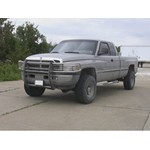

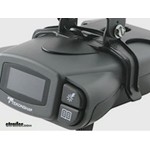













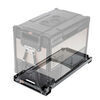


















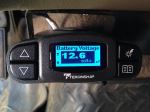



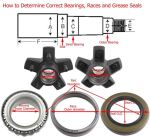




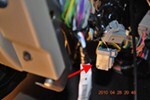



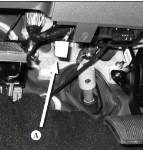
Thank you! Your comment has been submitted successfully. You should be able to view your question/comment here within a few days.
Error submitting comment. Please try again momentarily.